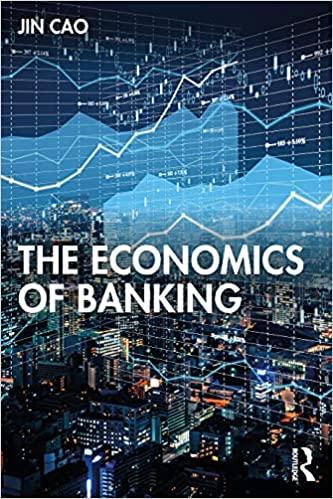Consider a small open economy with a tradable goods sector and a nontradable goods sector. Only tradable
Question:
Consider a small open economy with a tradable goods sector and a nontradable goods sector. Only tradable goods can be traded internationally; nontradable goods have to be consumed domestically. The economy is populated by a continuum of identical households of measure one, living for two periods \(t=0,1\), with preferences given by \(u(c)=\ln c_{0}^{T}+\ln c_{0}^{N}+\ln c_{1}^{T}\), in which \(c_{0}^{T}, c_{0}^{N}, c_{1}^{T}\) are consumption of tradable goods at \(t=0\), consumption of nontradable goods at \(t=0\), consumption of tradable goods at \(t=1\), respectively.
A representative household starts with initial asset \(b_{0}\) at \(t=0\), and ends after \(t=1\) with zero asset, i.e., \(b_{2}=0\). Note that \(b_{0}\) can be positive or negative: when \(b_{0}<0\), the household starts with initial debt. The timeline of events is as follows:
- At \(t=0\), the representative household receives both an endowment of tradable goods \(y_{0}^{T}\) and an endowment of nontradable goods \(y_{0}^{N}\) for consumption. \(y_{0}^{T}\) is a random variable that is drawn from a distribution with cumulative distribution function \(F(y)\), while \(y_{0}^{N}\) is constant. \(\operatorname{After}\left(y_{0}^{T}, y_{0}^{N}\right)\) is revealed, the household can also borrow from abroad by purchasing a one-period, non-state contingent foreign bond denominated in units of tradables that demands a fixed interest rate \(r\)-normalized to be 0, determined exogenously in the world market. Normalize the price of tradables to 1 and denote the price of nontradable goods by \(p_{0}^{N}\). In addition, the household's debt is securitized such that its total debt cannot exceed a fraction \(0<\kappa<1\) of its total income from tradables and nontradables;
- At \(t=1\), starting with total asset \(b_{1}\) the representative household only receives an endowment of tradable goods \(y_{1}^{T}\) for consumption. \(y_{1}^{T}\) is constant.
(a) Specify the representative household's budget constraints, borrowing constraint, and life-time optimization problem.
(b) Compute the first order conditions for the household's optimization problem:
i. Derive the first order conditions with respect to \(c_{0}^{T}\) and \(c_{0}^{N}\), then determine \(p_{0}^{N}\);
ii. Derive the first order conditions with respect to \(c_{1}^{T}\) and \(b_{1}\), then determine the Euler equation. Why is the borrowing constraint occasionally binding?
(c) Determine \(c_{0}^{T}\) :
i. Under what condition(s) is the borrowing constraint not binding? In this case, use the results from question (b) to determine \(c_{0}^{T}\);
ii. When the borrowing constraint is binding, compute \(c_{0}^{T}\).
(d) Consider two situations at \(t=0\) : the economy can be either in normal state \(y_{0}^{T}=\bar{y}\), i.e., the household receives a mean value \(\bar{y}\), or crisis state \(y_{0}^{T}=\bar{y}-1\), i.e., \(y_{0}^{T}\) is below the mean. Suppose the household knows the true state before it borrows.
i. If borrowing constraint is not binding in both states how does \(c_{0}^{T}\) react to the crisis, compared with \(c_{0}^{T}\) in the normal state?
ii. If borrowing constraint is binding in both states, how does \(c_{0}^{T}\) react to the crisis, compared with \(c_{0}^{T}\) in the normal state?
Step by Step Answer:






